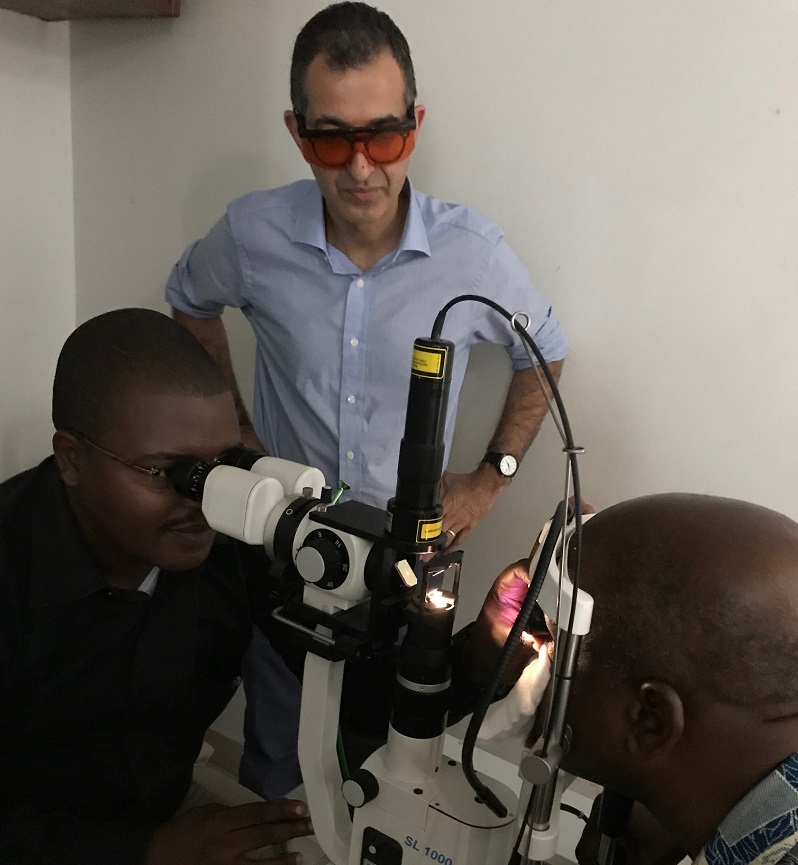Join a powerful, unprecedented alliance for better eye health for all.
Join IAPB-
Choose an alternate language here

Diabetes mellitus is rapidly increasing as a major cause of death and organ damage globally. According to the World Health Organization and International Diabetes Federation, the number of people living with diabetes was 425 million in 2017 and is projected to rise to 629 million in 2045. One of the most feared complications of diabetes is how it can affect the eyes, or diabetic retinopathy. As more diabetic eye screening programs are set up in medium-to-low income/resource countries, increasing numbers of patients are screened positive with diabetic retinopathy and potentially may require laser treatment as their first-line standard of care treatment to prevent vision loss or even blindness.
Laser treatment is a well-established procedure given by eye doctors in the clinic that involves the application of tiny laser spots (“photocoagulation”) onto the light sensitive parts of the eye known as the macula and retina. Unfortunately the conventional “long laser pulse” laser treatment protocols have well-recognised complications inside the eye which causes tissue scarring, getting worse as time goes by. Over the last 10 years, there has been a major shift to use new laser treatment technology. Many patients are now treated with a newer type of “short laser pulse” device, which uses lighter laser burns, as this type of laser causes minimal damage to the retina. For patients, this means that this newer laser treatment still helps to prevent sight loss but with minimal complications. The newer laser systems can also be applied much faster using a pattern scanning technology where many laser spots are delivered at the same time which reduces the treatment time for patients, and improves the patient experience from the laser treatment.
Regardless of which laser is used, there is still a real risk of loss of vision from inadequate laser treatment, despite successful screening and detection of sight threatening diabetic retinopathy. In our selected medium-to-low income/resource countries, our experience was that many doctors had not received appropriate training they required during their residency training programs, particularly to safely and effectively use these newer lasers and protocols.
Our SiB-funded QUILT project has successfully developed a totally new on-line application to support practical skills training in laser treatment for doctors that is equally relevant in this new era of laser therapy. QUILT provides a bespoke training package for doctors to be trained in established and new laser techniques for treating patients in their clinics. The QUILT platform has structured training packages with real-life patient conditions treated using the simulator. The QUILT platform training has so far been delivered to 15 retina specialists/surgeons from Bangladesh, 93 trainee doctors from China, and 4 trainee doctors in Ghana. The feedback from doctors was very encouraging and they greatly valued the training skills learned from using QUILT. The QUILT project has now been published in the leading ophthalmic journal, “Retina”, with open access availability and we can be contacted for more information.
For the full article click here.
Authors:
Mahi MK Muqit PhD FRCOphth, Consultant Vitreoretinal Surgeon, Moorfields Eye Hospital NHS Foundation Trust, London, UK
Stephen J Aldington FInstLM, Research and Development Manager, Department of Ophthalmology, Gloucestershire Hospitals NHS Foundation Trust, Cheltenham, UK
Professor Peter H Scanlon FRCOphth, Consultant Ophthalmologist, Department of Ophthalmology, Gloucestershire Hospitals NHS Foundation Trust, Cheltenham, UK
For more SiB funded research, please click here.